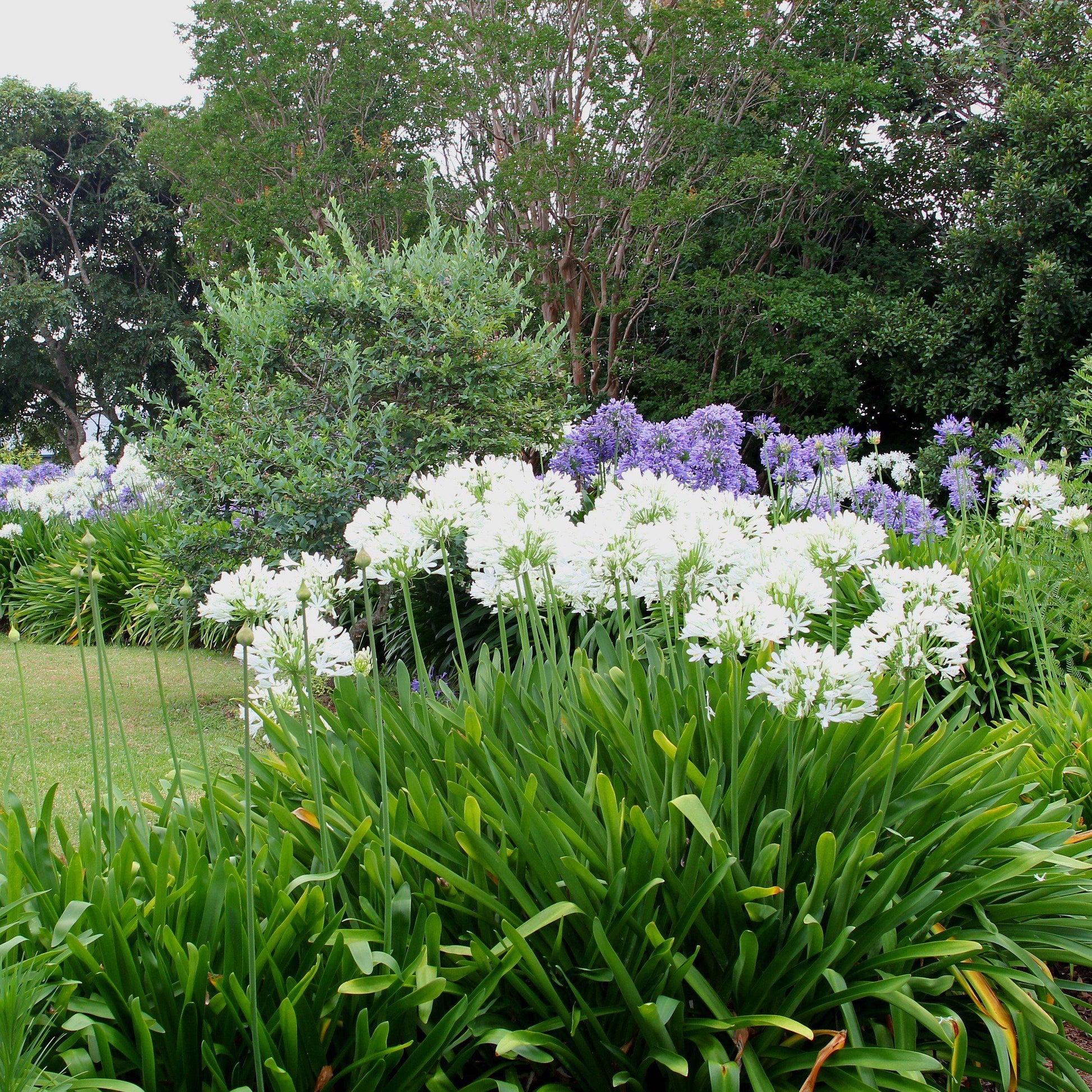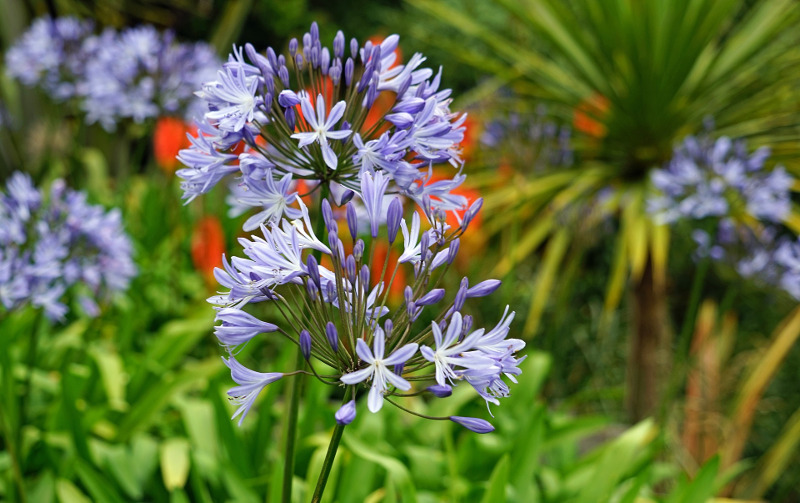Stunning Agapanthus: Enhancing Your Garden's Elegance
Stunning Agapanthus: Enhancing Your Garden's Elegance
Blog Article
Unleashing the Secret to Successful Agapanthus Cultivation: Idea for a Flourishing Garden
In the world of horticulture, cultivating agapanthus effectively needs a calculated strategy that incorporates different elements of plant care. By recognizing the subtleties of agapanthus growing, one can produce an atmosphere where these plants flourish and bloom perfectly.
Planting Agapanthus: Ideal Practices
When planting Agapanthus, appropriate soil prep work is crucial for making certain successful development and development of these beautiful flowers. Agapanthus, commonly called Lily of the Nile or African lily, flourishes in well-draining soil with a somewhat acidic to neutral pH level - Agapanthus. Before planting, it is important to amend hefty clay soils with raw material such as compost or peat moss to improve water drainage and give essential nutrients for the plants
To grow Agapanthus, choose a place that receives complete sunlight to partial shade, as this will certainly promote healthy and balanced growth and plentiful blooming. Dig a hole two times the size of the plant's origin sphere and position the Agapanthus at the exact same deepness it was previously expanding. Delicately backfill the hole with soil, weighing down strongly to remove any type of air pockets around the origins.
Water the recently planted Agapanthus extensively and continue to keep the soil equally moist, specifically throughout the plant's active expanding season. Agapanthus. Applying a balanced fertilizer once a month can better support the plant's development and flowering. By complying with these ideal techniques for growing Agapanthus, you can create a spectacular display of these captivating blossoms in your garden
Suitable Dirt Conditions for Agapanthus
For optimum growth and blooming success of Agapanthus plants, making certain the dirt problems are ideal is critical. Agapanthus prefers soil that is rich in nutrients, so incorporating a balanced plant food during the growing season can promote healthy growth and lively blooms.

Watering and Fertilizing Tips
To guarantee healthy and balanced development and lively flowers, proper watering and fertilizing methods are essential for successful Agapanthus cultivation. Agapanthus plants profit from normal watering, especially during the growing season. It is recommended to water deeply when a week, making sure the soil is damp however not saturated. Throughout heat or in pots, even more frequent watering might be necessary to stop the dirt from drying completely.
When it concerns fertilizing Agapanthus, a balanced plant food with equivalent components nitrogen, phosphorus, and potassium can be used in the spring to promote healthy and balanced development and blooming. Slow-release fertilizers are excellent for providing nutrients slowly over an extended period. Avoid over-fertilizing, as this can bring about extreme foliage development at the cost of flowers.
Furthermore, incorporating natural matter like garden compost into the dirt can enhance nutrient levels and improve dirt framework, aiding in the overall wellness of the Agapanthus plants. By complying with these watering and feeding tips, garden enthusiasts can ensure their Agapanthus plants grow and create spectacular displays of blossoms.
Pruning and Deadheading Techniques
Appropriate pruning and deadheading strategies play a critical function in maintaining the wellness and visual appeals of Agapanthus plants, enhancing the important practices go right here of watering and fertilizing for effective growing. Trimming Agapanthus includes removing spent blossom heads, dead or yellowing leaves, and total shaping of the plant to promote better development. Deadheading, the process of getting rid of faded blossoms, not just boosts the plant's appearance yet also urges further flowering.
When deadheading Agapanthus, it is advisable to clip off the blossom stem at the base making use of sharp, clean shears. This procedure redirects the plant's energy from seed manufacturing back into root and vegetation development, advertising a healthier and more robust plant. Normal deadheading can extend the flowering duration of Agapanthus and prevent self-seeding, which can cause congestion.
In terms of trimming, Agapanthus usually gain from a light trim after flowering to clean the plant and encourage fresh growth. Reducing the spent flower stems and eliminating any kind of dead or damaged foliage assists maintain the plant's vigor and general appearance. Nevertheless, it is important to avoid cutting into the crown of the plant, as this can compromise its health and wellness.

Protecting Agapanthus From Pests and Diseases
Executing effective insect and condition monitoring methods is vital to safeguarding the health and wellness and vitality of Agapanthus plants in farming. Agapanthus are usually sturdy plants, however they can still succumb various pests and conditions if not correctly looked after. One typical insect that affects Agapanthus is the Agapanthus borer, a caterpillar that passages into the plant, creating damages to the leaves and blossoms. To protect against invasions, regular inspection of the plants is necessary. If borers are identified, they can be manually gotten rid of, or insecticidal soap can be utilized as a control step.
In addition to insects, Agapanthus are vulnerable to illness such as root rot and fungal leaf spots. By remaining watchful and addressing parasite and condition problems immediately, garden enthusiasts can assist their Agapanthus prosper and grow.

Verdict
Finally, successful growing of agapanthus requires appropriate growing methods, ideal dirt conditions, ample watering and fertilizing, routine trimming and deadheading, and protection from parasites and diseases. By following these pointers and tricks, gardeners can make certain browse around this site a prospering garden full of beautiful agapanthus blossoms. Agapanthus. Bear in mind to maintain constant treatment and focus to detail to promote the wellness and long life of these magnificent plants
When planting Agapanthus, appropriate dirt prep work is important for making sure effective development and development of these stunning blossoms.Water the recently grown Agapanthus extensively and proceed to maintain the soil evenly moist, particularly during the plant's energetic expanding season.For optimal growth and blooming success of Agapanthus plants, guaranteeing additional reading the soil problems are suitable is critical. When transplanting or planting Agapanthus, make sure the dirt is well-prepared to supply the needed structure for the plants to develop themselves effectively. One typical bug that influences Agapanthus is the Agapanthus borer, a caterpillar that passages right into the plant, creating damages to the flowers and leaves.
Report this page